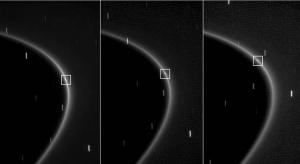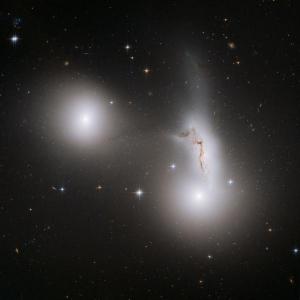
© NASA/JPL/Space Science InstituteThis sequence of three images, obtained by NASA's Cassini spacecraft over the course of about 10 minutes, shows the path of a newly found moonlet in a bright arc of Saturn's faint G ring.
NASA's Cassini spacecraft has found within Saturn's G ring an embedded moonlet that appears as a faint, moving pinprick of light. Scientists believe it is a main source of the G ring and its single ring arc.
Cassini imaging scientists analyzing images acquired over the course of about 600 days found the tiny moonlet, half a kilometer (about a third of a mile) across, embedded within a partial ring, or ring arc, previously found by Cassini in Saturn's tenuous G ring.
The finding is being announced March 3 in an International Astronomical Union circular. Images can be found
HERE,
HERE and
HERE.
"Before Cassini, the G ring was the only dusty ring that was not clearly associated with a known moon, which made it odd," said Matthew Hedman, a Cassini imaging team associate at Cornell University in Ithaca, N.Y. "The discovery of this moonlet, together with other Cassini data, should help us make sense of this previously mysterious ring."





